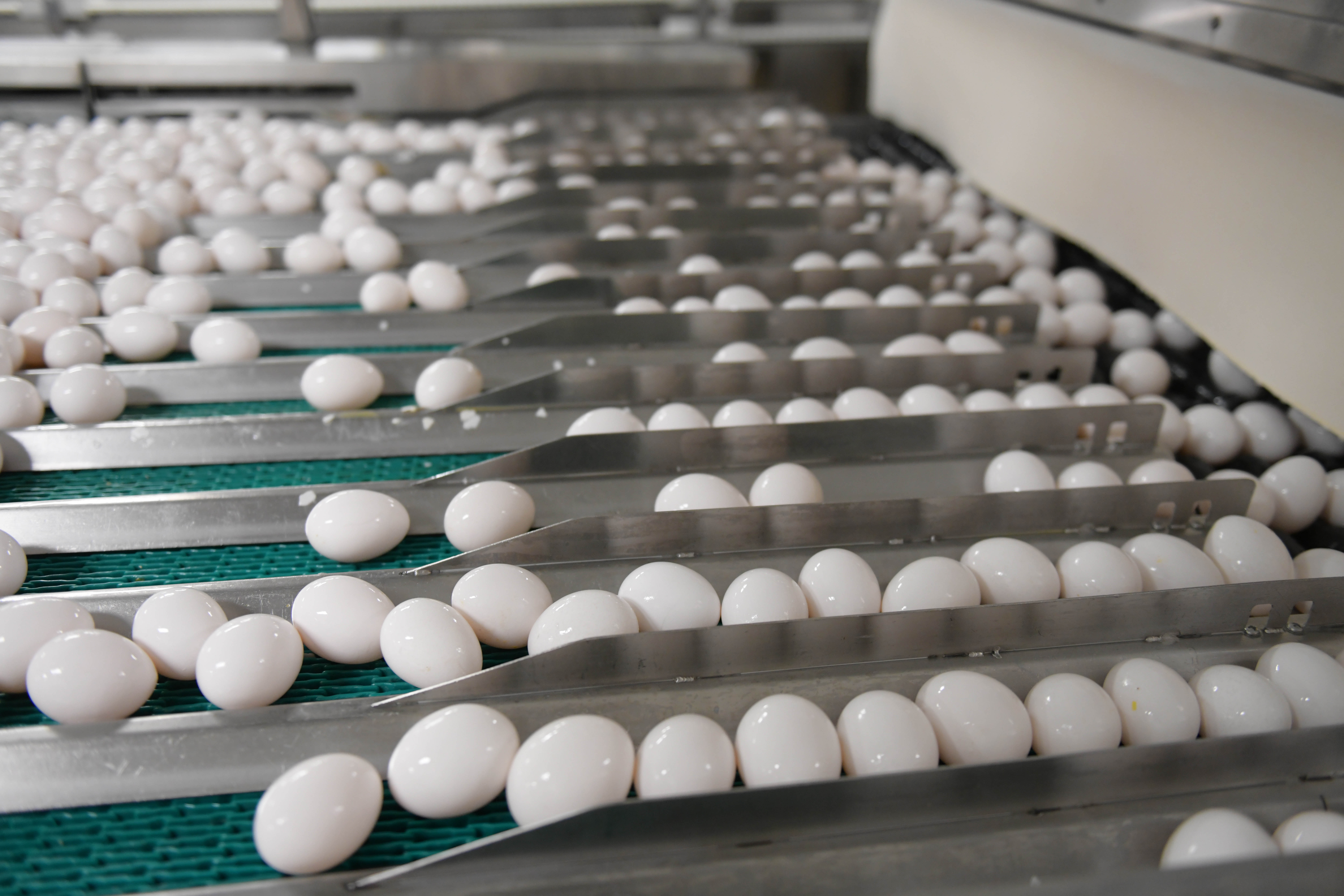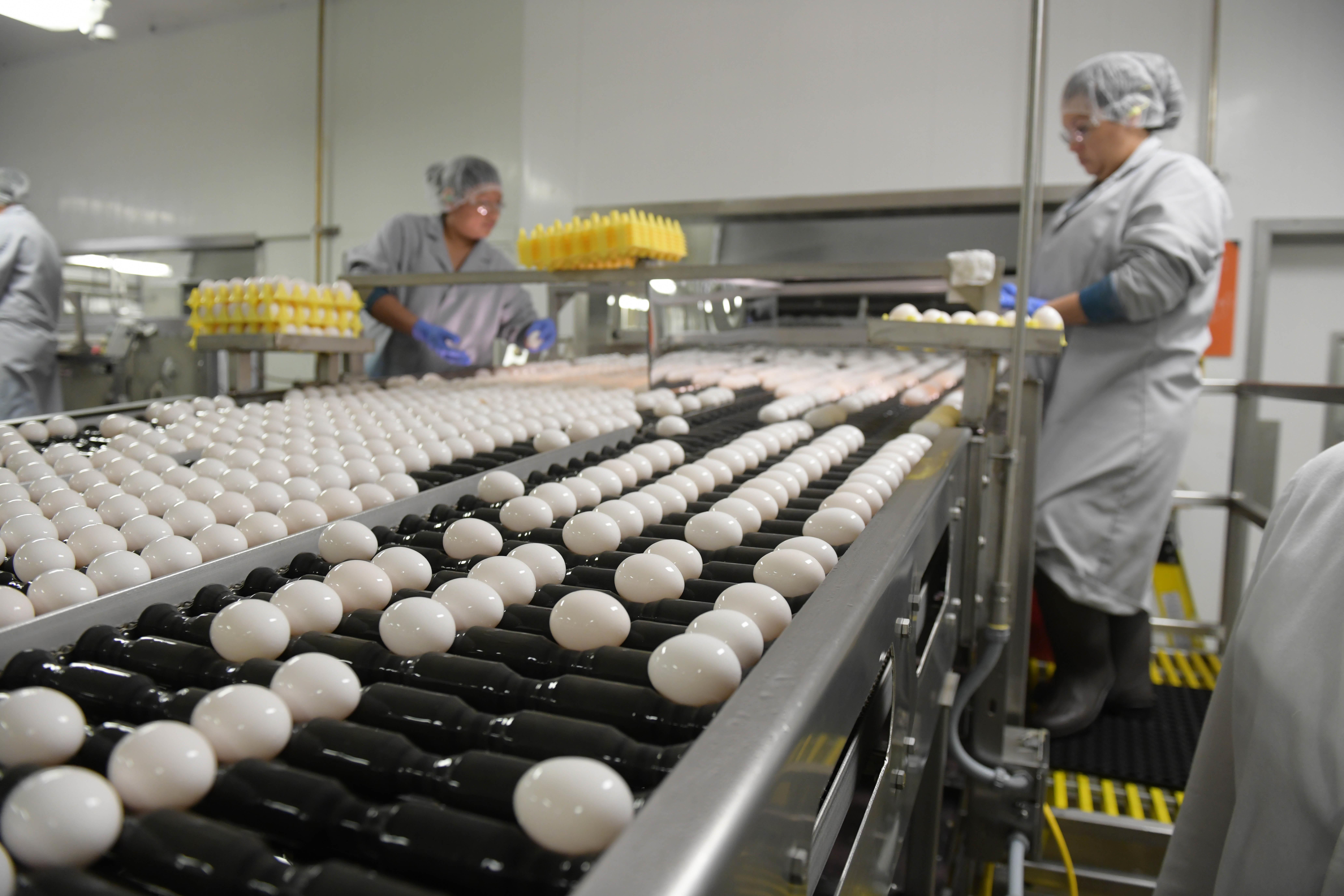What to Know and Love About Eggs
February 9, 2023
By Ann Foster Thelen
The Iowa Egg Council shares information about what’s affecting egg prices and why there is so much to love in every perfect oval.
Eggs have been making headlines recently. While the incredible nutritional profile of eggs is news-making in itself, rising prices have instead been on consumers’ minds.
Even with temporary pricing changes at the grocery store, there is so much to love in every oval. Eggs are still one of the most affordable sources of high-quality protein and essential nutrients. Their compact 70-calorie package also offers 13 essential vitamins and minerals, and antioxidants, making them a popular food for any meal of the day. Plus, kids and adults love their versatility and flavor!
The Iowa Food & Family Project (Iowa FFP) recently sat down with Anne Wemhoff, director of marketing and communications for the Iowa Egg Council, for information about Iowa’s egg industry, what’s affecting prices, supply and demand, tips on making the most of eggs, and more.
Please note, by clicking the following links, you’ll be leaving a partially funded checkoff site.
Iowa FFP: Tell us about Iowa’s egg industry, its leading role in the nation and why eggs are an egg-ceptional food.
Wemhoff: Iowa is the No. 1 egg-producing state in the U.S. According to a study from Iowa State University, in 2018, there were 57.7 million layers in Iowa that produced 16.4 billion eggs, or 17% of the U.S. egg production. This is also great for Iowa’s soybean and corn industries, as 57.8 million bushels of corn and 531,317 tons of soybean meal were fed to laying hens and pullets during that same year. The Iowa egg industry generated $2.62 billion in total industrial output in the state in 2018.
One large egg is a good or excellent source of protein, all in just 70 calories. High-quality proteins have all essential amino acids, which are not produced by the body and are needed for children to grow and for all bodies to function properly. When eaten, protein is broken down into amino acids, which are then used to help the body with various processes, such as building muscle and regulating immune function.
Iowa FFP: Egg prices continue to be in the news. What are the top factors affecting egg prices at the grocery store?
Wemhoff: Affordable food matters to consumers, and as one of the highest-quality proteins available, eggs are still a great value. While farmers don’t set the price of eggs, they’re doing everything they can to keep costs down and grocery stores stocked.
Many factors impact egg prices. Producers have been dealing with Highly Pathogenic Avian Influenza (HPAI), which affects supply and demand. Like nearly all goods and services, egg prices have been impacted by inflation and supply chain challenges. The good news is that our farms are recovering quickly. In fact, most of the egg farms affected by HPAI this year have recovered and are back to producing eggs.

Iowa FFP: Has the egg market experienced this upward price pressure in the past?
Wemhoff: People buy a lot of eggs during the holidays for baking and entertaining, and now that the end-of-the-year holidays are behind us, we hope to see those prices level off. People love eggs, and as one of the highest-quality protein sources available, they know eggs are still a good value.
Iowa FFP: Has there been a shift in demand for eggs?
Wemhoff: Much like many commodities, Iowa’s egg farmers feel pressure in supply and demand based on consumers’ needs. Consumers are looking for affordable protein options, and eggs continue to fall into this category. Eggs are on-trend, versatile and easy to prepare. They are a wholesome food and provide many health benefits with their egg-ceptional nutritional profile. From heart health to eye health to weight management, eggs boast nutrients that contribute to overall wellness
Iowa FFP: For consumers concerned about adequate supplies of eggs, how does Iowa’s role as the No. 1 egg-producing state positively impact supply in the state?
Wemhoff: There have been reports of temporary shortages in a few locations, and Iowa’s egg producers have been working closely with one another and their customers to ensure everyone gets the eggs they need. In the U.S., there are more than 300 million egg-laying chickens – almost one bird for every America – so any shortages are isolated and are being swiftly corrected.

Iowa FFP: When can consumers expect prices for eggs to come down?
Wemhoff: Egg prices are already starting to come down. Egg sales have remained strong even with these temporary price increases. Consumers can feel confident knowing that egg farmers are working around the clock to meet demand and keep eggs plentiful and affordable.
Iowa FFP: What are some ways consumers can keep integrating eggs into their diets while making the incredible protein go further in meal planning?
Wemhoff: Incredible, edible eggs provide protein that fuels everything from lifting weights to running to providing an easy meal for the family. Two eggs – at 140 calories and 14 grams of protein – equal most nutrition bars on the market without any extra ingredients. Eggs can also be integrated into many recipes, where pairing them with other proteins, fruits and vegetables makes a complete meal. Find recipes at www.iowaegg.org and visit https://bit.ly/39CrRzm for nutrition and meal ideas, perfect for people of all ages.
Iowa FFP: Are there ways to freeze eggs for later use? If so, what are some tips for safely doing so?
Wemhoff: Do not place the entire shell egg in the freezer. Instead, crack the egg and store it in an airtight container. The United States Department of Agriculture Food Safety and Inspection Service says you can freeze eggs for up to one year. When you’re ready to use frozen eggs, thaw them overnight in the refrigerator or under running cold water. Use egg yolks or whole eggs as soon as they’re thawed.
Read a recent Fresh Pickings magazine article for more information about egg nutrition.